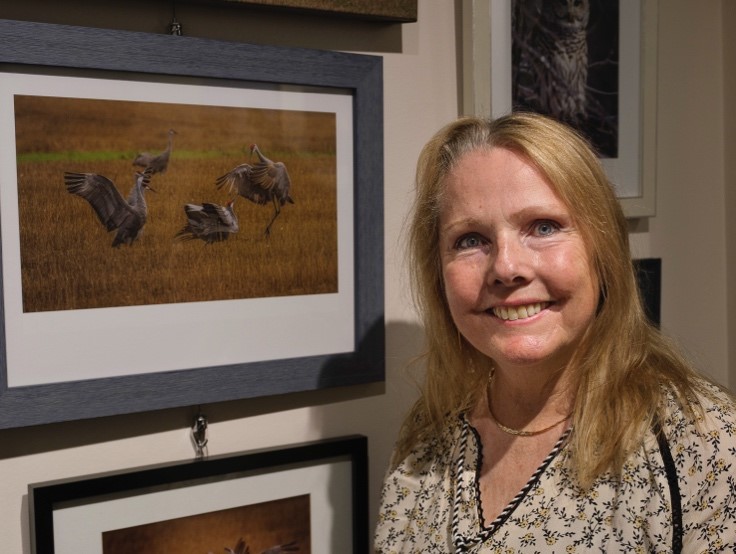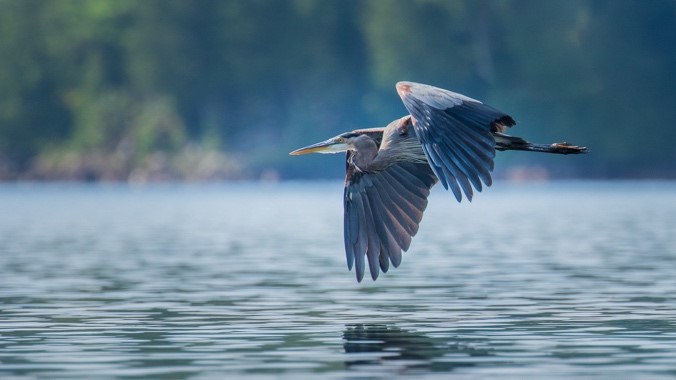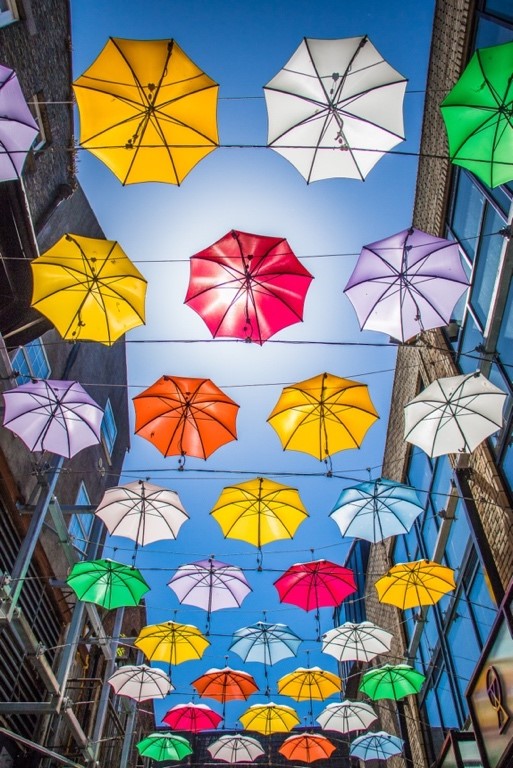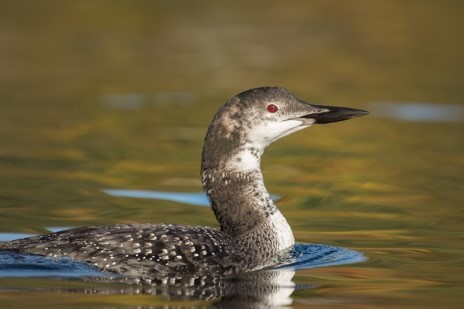
By Leslie Carlin and Albert Lightstone
Our current production of Around the World in 80 Days is so huge and globe-encompassing that we are showcasing not one, but two artists in the Spotlight Studio of the Janigan Gallery. I have had the immense pleasure of chatting with Leslie Carlin, photographer extraordinaire, about her career and her work. I was staring at some of her photos wondering where I’ve seen them before and I realized – CTV News!
Let’s start way at the beginning. Where were you born and how did you end up in Ottawa?
I was born in Montreal and my family moved to Ottawa when I was three years old.
Where did you study?
I studied at the University of Ottawa for four years and obtained a Bachelor of Science in Nursing degree, graduating in 1979.
We can all truly appreciate what nurses do for us in the medical system so, to borrow a phrase used for the American military personnel, “Thank you for your service”. Where did you work as a nurse?
For the first 23 years of my career, I worked at the Vancouver General Hospital as a general duty nurse, and then after moving back to Ottawa in 2002, I continued my career at the University of Ottawa Heart Institute as a Research Coordinator. I finished my career as a Research Project Manager in Regenerative Medicine at the Ottawa Hospital Research Institute.
Since retiring do you do any nursing?
I am still available if needed to work as a Research Coordinator Consultant with the Ottawa Hospital Research Institute, however, I gave up my license for active duty when I retired. So, I guess the answer is, not at the bedside.
Where do you live?
I live on the Quebec side in Val des Monts, next to the lovely McGregor Lake.
How did you get into photography?
I have enjoyed photography all my adult life, since I was a teenager, and after retiring I took a course in Basic Digital Photography at Algonquin College, where I learned how to take photos in ‘Manual’ mode. Once you learn that there is no going back to automatic. The pictures are just too pretty.
I see from your display that you prefer wildlife photography and birds and, according to your bio, especially cranes. Why cranes?
When you see and experience a sandhill crane for the first time, it is a moment you will never forget. I was out in the trails on my bicycle one typical day, enjoying nature and taking photos of wildlife that happened by. I was taking a break for lunch and resting on a bench eating a peanut butter sandwich when without warning, a juvenile sandhill crane who had been hidden in a patch of tall reeds in the marsh beside me, was spooked by other people cycling on the path and took to the air flying by right in front of me. I had never seen such a beautiful creature; what a blessed and lucky moment it was. It was life changing. The sandhill crane is one of the most ancient of all birds, their story is amazing and timeless. They are strong as they have braved the challenges of an ever-changing world; the destruction of their wetland habitats and the ever-present danger of being hunted. They are very tall, elegant birds with human-like mannerisms yet so gentle and family oriented. Their bird song is so distinctive and musical. It is soul fulfilling to be in their presence. To me whenever you find them, they bring gifts of joy, hope and wonder. They are majestic birds and ambassadors of goodwill that connect habitats, cultures and people beyond social, political or economic limits. This photo of them is titled “Operation Migration” taken September 2022 on Manitoulin Island.

When I ever see them, I will certainly appreciate them even more. So, what equipment do you use?
I use a DSLR Canon 7D Mark II. These cameras are specifically geared for wildlife photos.
How do you set up for a nature shot?
Most of my subjects are moving so I set to a combination of high speed, over 1/1000 of a second, a low ISO in daylight, and a low F-stop (large opening) and set to expose in cloudy conditions.
How do you get the perfect shot?
Well realistically one gets the ‘perfect’ shot by being skilled at and using good post-editing software on the computer, LOL. But to answer the question I believe you are thinking of, I get the captures that I am looking for by anticipating the movements the subject will take and positioning myself in front of where I think the subject will move into the scene. Always trying to be unnoticed and getting level with the subject, so for example, crouching low on or near the ground for a fox or a mink, or using a tripod for an owl sitting on a post, or sitting in a kayak for a loon swimming by with her babies. Some photographers wear camo, but I don’t; the trick is to get to the location ahead of time and wait for the subject to arrive, have lots of patience and be quiet, try to be as close as possible to be ‘one with nature’ with them and be respectful; you are in their territory, their environment.
When taking photos of wildlife, how many shots do you actually take (#) and how do you narrow it down to one?
For birds, especially sandhill cranes and owls, I can easily take a thousand shots and narrow it down according to good focus at the subject’s eye with the subject looking toward me and surrounded by a nice bokeh environment, making a lovely composition. I always try to have some of the surrounding environment in the photo to help with the understanding of telling the story of their habitat. The ‘one’ photo that is chosen out of the herd is the one that touches me the most.
I recognized some of your shots years back from a CTV broadcast which shows what an impression it made on me. How did you win the photo contest at CTV? Were you contacted? Did you just enter?
I submitted the photos to CTV via email and both times my photos were presented on the six o’clock news on the same day.
What type of recognition was there? How did you feel when you won?
The first photo I submitted was of the Great Blue Heron in flight over water. At that time, 2018, the CTV Ottawa 6 o’clock News had a contest wherein photos were submitted, then picked to be shown on-screen during one of the weekdays and at the end of the week the winner was chosen from those shown that week as the ‘Photo of the Week’. I won a beautiful canvas print of it prepared by Koyman Galleries. The second photo I submitted was of the Chief William Commanda Bridge at sunset taken in spring 2023 from the SJAM parkway (recently renamed ‘Kichi Zibi Mikan’). It was shown on the CTV Ottawa 6 o’clock News that evening. The contest is no longer going on. It was very exciting, to be received in that way.

Have you exhibited?
I am new to exhibiting, it takes a bit of bravery to have your photos exposed to the public.
What’s your favorite photo? What’s the background story?
I have many favorite photos: loons, owls, hummingbirds, etc. It is exhilarating firstly to find your subject in nature, in their environment; secondly to become one with them in their environment so they feel at ease with you being there, and thirdly to capture them when you feel you have made a connection with them in that moment performing what they would naturally be doing in that moment. Of course, they know you are there and to believe that they feel comfortable with you being there and taking their photo is rewarding in itself. For example, the photo of the juvenile loon floating while taking advantage of a quiet morning on the still waters of the lake. In my kayak I can get up to within 5-10 feet of them. Sometimes they swim up close to me to check me out, I have never experienced a moment of aggressiveness (touch wood).
More specific to the current showing, what is your favorite photo on display and why?
I am glad you asked this question. My favorite photo on display at the Ottawa Little Theatre is of the snowy owl, titled “Turning A Corner”. I will tie my answer to this question with what I mean in my bio statement: “Beauty and peacefulness of nature and the intricacies of the human experience”. I took this photo about three years ago. Such a beautiful creature, she had been positioned on a telephone pole peacefully for quite some time, then as late afternoon approached she started to stir. I could tell she was about to leap off the pole so got camera ready in the hopes, as always, that the bird will fly in my direction. She lifted off and it looked like she was going to fly to the left and away from me as she was looking on in her own world in that direction. Then suddenly she turned her head looked immediately toward me, folded her wings in front of her, as shot in the photo, and turned 90 degrees heading right for me. It was an exciting moment to be able to capture her beauty in that way. Her eyes so bright in the sunlight, the delicate sound of her wings gracefully flapping and the feeling of strength in her presence. And I liken the feeling to the human experience of feeling a sense of elation when someone you know (and love) is (gravely) ill and with every breath you hope that someday they will ‘turn a corner’, gain strength, get better and return to their normal physical state of health and well-being. And when they do that the sense of relief and elation felt is remarkable and unforgettable. Every time I look at this photo all those same feelings of hope, elation, and gratitude for the moment, return to me; hence the two-fold title. It is a wonderful experience.

I just returned from a wedding in Jerusalem, Israel, and was staying at a hotel on a street with beautiful, coloured umbrellas suspended overhead. This is very similar to one of the photos on display. Where was yours taken?
The umbrella rooftop photo that is on display at OLT was taken in Dublin, Ireland, during a holiday trip, June 2018. We went to Ireland with a group of musicians from our Ottawa New Horizons Band. The first day of arriving in the city of Dublin we all went our separate ways doing a walk about in the streets to get a feeling of what the city had to offer. Wanting more of a feeling of the hidden culture, the possibility of mingling with the locals or seeing a lovely wall mosaic, my boyfriend and I changed course away from the crowds in favour of the side streets and alleyways. We happened across Anne’s Lane with its umbrellas, reflecting sunlight, hanging from wires suspended from the rooftops. The umbrellas provided shade for anyone lingering below. And on that day there happened to be a professional photo shoot of two young lads dancing their jive. It was a lot of fun to be there; find them, watch their performance and to capture that moment on film – although this particular photo highlights the beautiful rainbow colours of the umbrellas, a stunning subject in itself. Photos are great ways to help remember the special experiences you have while travelling.

Do you sell your work?
I am in the process of setting things up. To date, I have mostly given away prints to people who have particularly loved a piece and whom I know personally.
How do you sell?
Recently I have become a member of the SmugMug team. It is a website where photographers can display their art and the option of selling is available. The website link is https://lesliecarlin.smugmug.com and the easiest way to make a purchase is to contact me through my email: gls22@live.com to make an etransfer, instead of going through the website.
Do you do commission work?
Sure, I would be open to that, depending on the request. I do not have certification, therefore do not do weddings or special events professionally unless it is a wish for someone I know personally. However, if anyone has an owl in their backyard they would like beautifully photographed to hang on their wall I would be more than happy to accommodate!
What size sells the best?
I believe the most popular print sizes are 8×10” as is or in a frame mounted to 11×14”.
What do you recommend for putting on the wall? Frame? Dry mount?
There are different framing styles for framing prints for placing on the wall; matted, matless, floating-mounted and canvas, among others, I believe it would all depend on personal preference. I am displaying matted, matless and canvas prints at OLT. I do recommend going to a photoprint company that has a good reputation as the colour printed can make all the difference between a mediocre and a fabulous image.
Basically, you want a system that will last the test of time; glass helps to protect from damage and fading from sunlight. To prevent fading, especially for canvas, I suggest hanging away from the direct glare of sunlight streaming through the window. I like using a wire system in the back with stable hooks, then you can more easily interchange photos and protect spots on the walls.
What is your connection with OLT?
I am a newbie to OLT. I am 100% in support of their great work. I am so looking forward to seeing the upcoming play Around the World in 80 Days and feel immense gratitude for the opportunity to display my work in their Spotlight Studio.
How did you feel when Venetia contacted you?
I felt wow-ness and honoured to be a part of this exhibition, Venetia is such a lovely person and I felt very welcomed by her warmth and enthusiasm for our display. I am so grateful to my sister Marilyn for offering me to share my framed photos with her fabulous oil painting exhibit.
What do you think of the OLT and their productions?
Kudos to OLT for their incredible commitment to theatre arts and the training of budding actors, not only providing job opportunities but also acting lessons. The OLT is so well established and revered amongst its peers and the community. I think it is amazing that our Canadian Yousuf Karsh, described as one of the most notable portrait photographers of the 20th century, had such an intimate connection with OLT in the 30s and that there are original photographs of his on display at the theatre. I feel blessed and honoured to be a part of their entertainment community.
Thank you very much Leslie. Please visit her exhibit before the show and during intermission.
Leslie can be contacted at
lesliecarlin.smugmug.com
gls22@live.com


